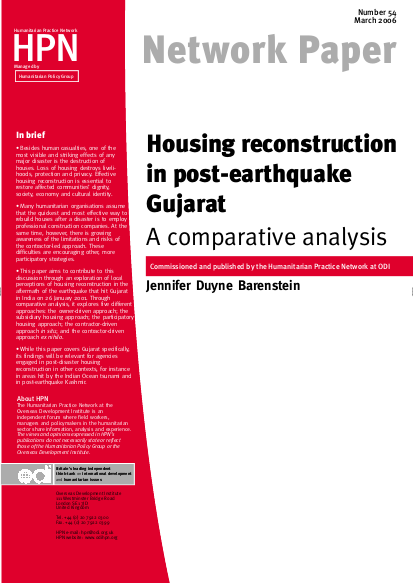
Besides human casualties, one of the most visible and striking effects of any major disaster is the destruction of houses. Loss of housing destroys livelihoods, protection and privacy. Effective housing reconstruction is essential to restore affected communities’ dignity, society, economy and cultural identity.
Many humanitarian organisations assume that the quickest and most effective way to rebuild houses after a disaster is to employ professional construction companies. At the same time, however, there is growing awareness of the limitations and risks of the contractor-led approach. These difficulties are encouraging other, more participatory strategies.
This paper aims to contribute to this discussion through an exploration of local perceptions of housing reconstruction in the aftermath of the earthquake that hit Gujarat in India on 26 January 2001. Through comparative analysis, it explores five different approaches: the owner-driven approach; the subsidiary housing approach; the participatory housing approach; the contractor-driven approach in situ; and the contractor-driven approach ex nihilo.
While this paper covers Gujarat specifically, its findings will be relevant for agencies engaged in post-disaster housing reconstruction in other contexts, for instance in areas hit by the Indian Ocean tsunami and in post-earthquake Kashmir.
Resource collections
- Accountability to affected populations (AAP)
- ALNAP focus topics
- UN Habitat - Urban Response Collection
- Urban Response - Urban Crisis Preparedness and Risk Reduction
- Urban Response Collection - Community Engagement and Social Cohesion
- Urban Response Collection - Economic Recovery
- Urban Response Collection - Environment and Climate Change
- Urban Response Collection - Housing, Land and Property
- Urban Response Collection - Urban Crisis Response, Recovery and Reconstruction
- Urban Response Collection - Urban Resilience